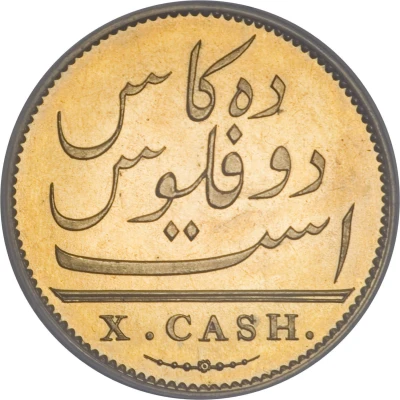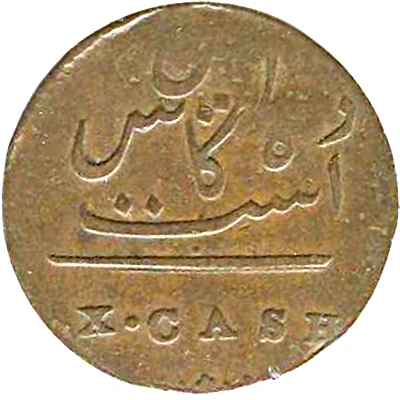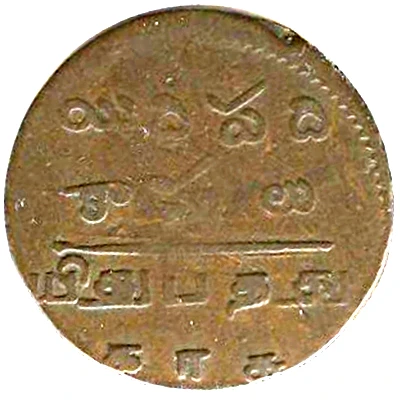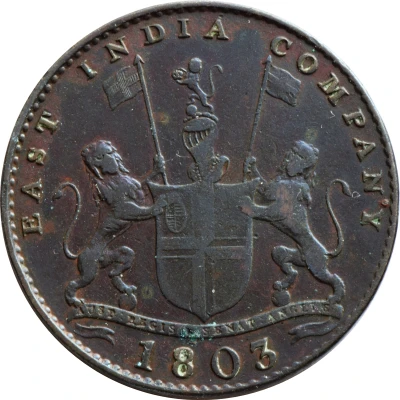
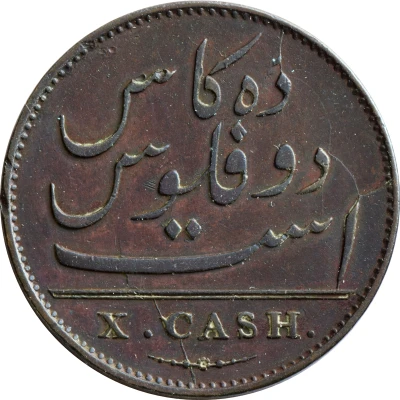

© Joseph Kunnappally
10 Cash
| Copper | 6.47 g | 25.8 mm |
| Issuer | Madras Presidency (British India) |
|---|---|
| Type | Standard circulation coin |
| Years | 1803-1808 |
| Value | 10 Cash (1⁄336) |
| Currency | Pagoda (1639-1817) |
| Composition | Copper |
| Weight | 6.47 g |
| Diameter | 25.8 mm |
| Thickness | 1.1 mm |
| Shape | Round |
| Orientation | Coin alignment ↑↓ |
| Demonetized | Yes |
| Updated | 2024-10-05 |
| Numista | N#4090 |
|---|---|
| Rarity index | 14% |
Reverse
The value in Persian: Dah kas do falus ast
Scripts: Latin, Persian
Lettering:
ده کس
دو فلوس
است
X. CASH.
Translation:
Ten cash
Make
Two Falus
Engraver: John Phillp
Edge
Plain
Comment
- Parallel to the rupee, the Madras Presidency also used the fanam.80 cash = 1 fanam
12 fanam = 1 rupee
42 fanam = 1 gold Pagoda = 3.5 rupees
Interesting fact
The 10 Cash coin from Madras Presidency (British India) made of Copper weighing 6.47 g has an interesting fact that it was one of the first coins to feature a portrait of a British monarch, King George III, on the obverse side, which was a departure from the traditional depiction of Indian deities on coins. This change in design was a result of the British East India Company's influence on the currency of the region.
Price
| Date | Mintage | VG | F | VF | XF | AU | UNC |
|---|---|---|---|---|---|---|---|
| 1803 | - | - | - | - | - | - | |
| 1808 | - | - | - | - | - | - |
Values in the table are based on evaluations by sales realized on Internet platforms. They serve as an indication only for 10 Cash 1803-1808 coin.

